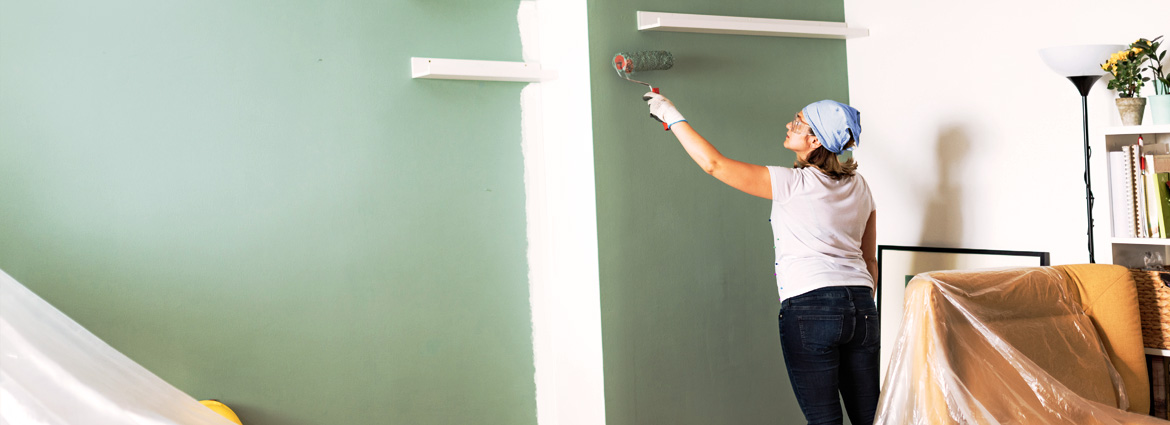You’ve been browsing real estate ads and dreaming of homeownership but haven’t yet socked away enough cash for a down payment. The good news is there still may be a way to buy a home now.
Saving the down payment required for a conventional mortgage can be the hardest part of the mortgage process. A high-ratio mortgage allows you to buy a home with much less than the standard 20% down because the terms let you borrow up to 95% of the purchase price of your home.
Alyssa Davies, a 31-year-old personal finance blogger and content manager for real estate marketplace Zolo Canada, bought her home in 2019 with a high-ratio mortgage and just 10 percent down. She says the lower down payment freed up funds for closing costs and other expenses, such as moving, changing the locks, and buying new furniture.
Looking to buy your first home with less than 20% down? Learn about the pros and cons of high-ratio mortgages and how they work to see if this financial tool is right for you.
How does a high-ratio mortgage work?
Homebuyers who are having a hard time coming up with a big down payment on the purchase price of a home, or who want to keep a stash of extra cash in the bank, may want to consider a high-ratio mortgage.
“A high-ratio mortgage is simply a home loan that allows you to make a down payment of less than 20%,” says Ashwin Adari, Coast Capital Savings senior product manager for mortgages.
These mortgages may be a good fit for first-time homebuyers who may not have a lot of money to spare or if a prospective buyer wants a home in a hot housing market like the Greater Vancouver area. Here, the MLS® Home Price Index composite benchmark price for all residential properties—detached and attached homes and apartments—soared to over $1.25 million in January 2022, up by 18.5 percent from the previous year (with apartments going for about $775,000 on average).
For Davies and her husband, first-time homebuyers, “putting less down will save us more money in the long run,” she says. She also figured they’d save more money over time by buying once instead of getting a “starter home,” then paying for multiple moves, closing costs, and real estate agent fees.
What is mortgage default insurance?
High-ratio mortgages have advantages and disadvantages and do come with one additional cost: mortgage default insurance. “The most important requirement of having a high-ratio mortgage is that you’ll need to pay for mortgage default insurance,” says Adari.
Mortgage default insurance protects a lender from loss when making a riskier loan. This insurance is a federal requirement when a buyer makes a down payment of less than 20% of the purchase price.
The total cost of the premiums for mortgage default insurance get rolled into the total amount of the mortgage, which increases your monthly payment.
“It sounds scary that there’s an additional fee,” says Davies, who opted to put down roots in BC’s neighboring Alberta province. “But at the end of the day, if it means you get to have your home, or have it sooner, then I think it’s worthwhile.”
The total cost of mortgage default insurance generally ranges from 2% to 4%1 of the mortgage amount, says Adari. The amount of the premiums generally vary based on the loan-to-value ratio, which is the amount of your down payment as a percentage of the purchase price.
“Higher loan-to-value ratios—which equates to lower value of down payments as a percent of the purchase price—attract higher premiums,” says Adari.
The pros of high-ratio mortgages.
Should you buy a home now with a high-ratio mortgage or wait until you can save up enough of a down payment to get a conventional mortgage?
To help you decide, here are a few of the advantages of a high-ratio mortgage:
- You may be able to buy a home sooner: “The need for a smaller down payment savings equals a faster path to homeownership,” says Adari.
- You may get a lower interest rate: A high-ratio mortgage typically offers a better interest rate than a standard mortgage because the default insurance makes the loan less risky. That’s how Davies ended up saving money on her mortgage despite the cost of the insurance.
The cons of high-ratio mortgages.
But high-ratio mortgages do have some disadvantages as well. Here are some of the downsides to a high-ratio mortgage:
- Higher monthly payments: The cost of your mortgage default insurance gets added to the mortgage loan balance, points out Adari. A larger mortgage loan means higher payments each month.
- Less time to pay off your mortgage: The maximum period of time you get to pay off an insured, or high-ratio, mortgage is usually 25 years. “At a given interest rate, a shorter amortization period [the length of time you’ll make payments toward your mortgage] inherently results in a higher mortgage payment,” says Adari.
- Maximum purchase price limits: If you plan to use a high-ratio mortgage, there may be a cap on the purchase price of the home. Your purchase price may be limited to less than $1,000,000 with a high-ratio mortgage.
You’ll need to take a look at your own situation and weigh these pros and cons before deciding if a high-ratio mortgage is the best choice for you.
What’s the minimum down payment for a high-ratio mortgage?
A high-ratio minimum down payment is just 5% of the purchase price for lower-priced homes, so just one-quarter of the minimum down payment for a conventional mortgage.
Here are the guidelines on the minimum down payment for a high-ratio mortgage based on home purchase price:
- Home purchase price of $500,000 or less: 5% minimum down payment.
- Home purchase price $500,000 to $1,000,000: 5% of the first $500,000, plus 10% of anything above that as a minimum down payment.
Keep in mind that costs and requirements may change over time, so it’s always best to check with a trusted mortgage professional to get current information specific to your situation.
What a high-ratio mortgage looks like.
Just so you can get an idea of how much a homebuyer might pay today for a mortgage, plus default insurance premiums, here’s an example of a high-ratio mortgage for someone purchasing a home for $500,000:
- Down payment (10% of the purchase): $50,000
- Mortgage default insurance premium:$13,9502
- Mortgage amount:$500,000 – $50,000 + $13,950 = $463,950
Do you have your eye on a home and want to get an idea of what your monthly mortgage payment might cost? Plug your numbers into Coast Capital’s mortgage calculator to get an idea of what you could afford to borrow, what your mortgage payment could look like, and your amortization period.
And, the number-crunching is key. Davies and her husband worked the numbers with a trusted mortgage broker and found that a high-ratio mortgage worked out better for them financially, especially since they were able to get a lower interest rate.
Davies and her husband were able to buy a traditional-style home with lots of privacy and outdoor space for the kids. They now have a 3-year-old daughter and a 4-month-old son.
“We bought based on our dream life,” she says.
Now that you know how high-ratio mortgages work and the pros and cons, you can make a more informed decision on whether to apply for this type of mortgage now or keep saving for a conventional mortgage in the future.
Interested in learning more about getting a mortgage? Contact our Coast Capital Mortgage Advisor to help you get started.
The stuff we have to say.
-
This is an estimate based on the guidelines at the time of publication.
-
This is an estimate based on the guidelines at the time of publication.



